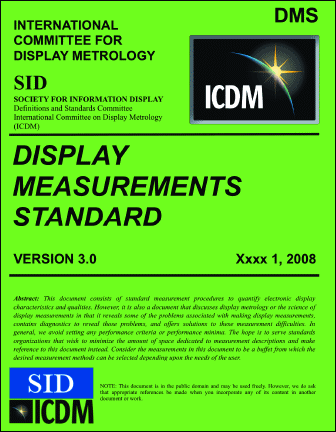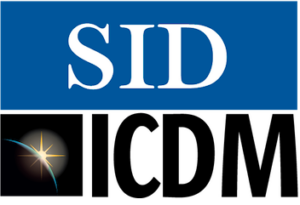I am going to say something controversial: The way display specs are reported is a flawed system prone to marketing manipulation. And worse, the specs do not represent what the human sees in an electronic display. In other words, our display metrology or measurement system is broken.

I bring this up now as we are about to attend the SID Display Week event in San Jose where all kinds of new display technologies will be unveiled and discussed – including metrology. The main SID sponsored organization responsible for display measurements is the International Committee for Display Metrology (ICDM). The ICDM has a general meeting on Tuesday night and I will give a short talk on the need for standards in the industry.
In preparing for this talk, it became clear that measurement techniques and reporting are not keeping up with advancements in display technology. Companies are free to use whatever specs and measurement techniques they like. And what is reported as a spec can often provide little insight into the actual performance of the display in real world conditions.
This is not a new phenomenon, but maybe it is time for some leadership on this issue. I am not sure we need more specifications, but maybe better specifications. For example, maybe there are specs or new terms that roll up several parameters to give a better understanding of the visual performance of the display. Is this the right approach? Is ICDM the right organization to lead reform in specs and marketing? I am curious what you think.
To illustrate some of the range of issues, consider the points below.
- Native resolution – counting red, green and blue subpixels is not sufficient for determining the native resolution of a display as sub-pixel rendering changes that reasoning completely.
- Contrast has several forms. Measuring the full white and full black screen luminance in a black room is not as meaningful as measuring white squares on a black background, yet this is rarely done. We have no definitions yet of high dynamic range either.
- Ambient testing – Why are displays tested in a totally dark room when they are not used this way? Why don’t we have some “standard” test environments like a cinema, auditorium, living room (night and day), conference room, etc. That way, products targeted for these applications can be evaluated under the same test conditions that correspond to their actual use.
- Projectors should be tested as a system coupled with a reference screen or a specific screen in a specified room environment. This is how they are used so a projector spec by itself is not a very helpful measurement of the ultimate performance.
- Wide color gamut content and displays are here, but does a % of a color gamut measurement really convey meaningful information? The more important questions to ask might be how accurate are the colors represented within the color gamut of the display? How does it handle out-of-gamut colors? Is there a way to understand and quantify metameric color perception issues as the RGB primaries become very narrow to achieve wide color gamut coverage?
- Luminance or brightness is always a number that manufactures focus on but it is clear that displays with saturated colors can appear brighter than display with less saturated colors even with a higher luminance measurement. Sticking a light meter in front of a display does not reflect what the user perceives.
- Scaling is not a native display metrology factor, but in reality, nearly every display does some sort of scaling up or in resolution to convert incoming content for the “native” resolution of the display. Should the quality of this scaling be evaluated too so you know whether to bypass it or not (if you even can)?
- Bit-depth is another typical non-display parameter, but it is integral to every display solution. What does the display do with 8-bit or 10-bit incoming content?
 If we want specs and marketing that better reflects what we will get in an application, then reform is needed. ICDM can certainly lead in developing specifications, but how do you get display and display-based product makers to change their tune and adopt new ways of presenting performance metrics? That is not so easy.
If we want specs and marketing that better reflects what we will get in an application, then reform is needed. ICDM can certainly lead in developing specifications, but how do you get display and display-based product makers to change their tune and adopt new ways of presenting performance metrics? That is not so easy.
Perhaps what the industry needs is a consortium or alliance of leading display makers and product brands to develop new metrics and communication tools to better convey what the display solution does.
If the industry fails to act, you can see the writing on the wall. There will be focus on semi-meaningless specs with a “my number if bigger than your number” mentality that will confuse and frustrate the end user. Is that what we want? – Chris Chinnock

